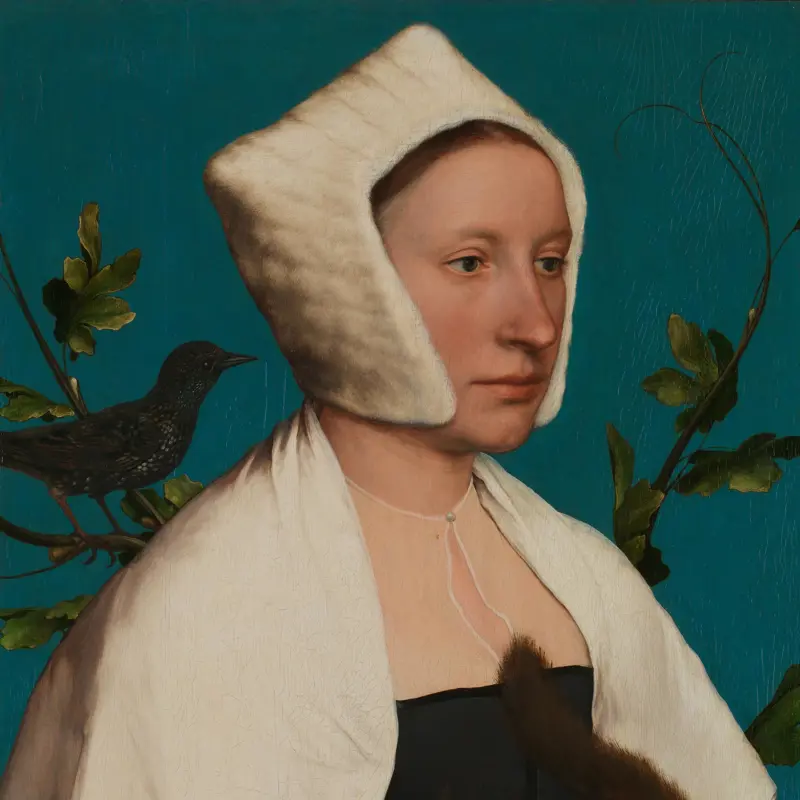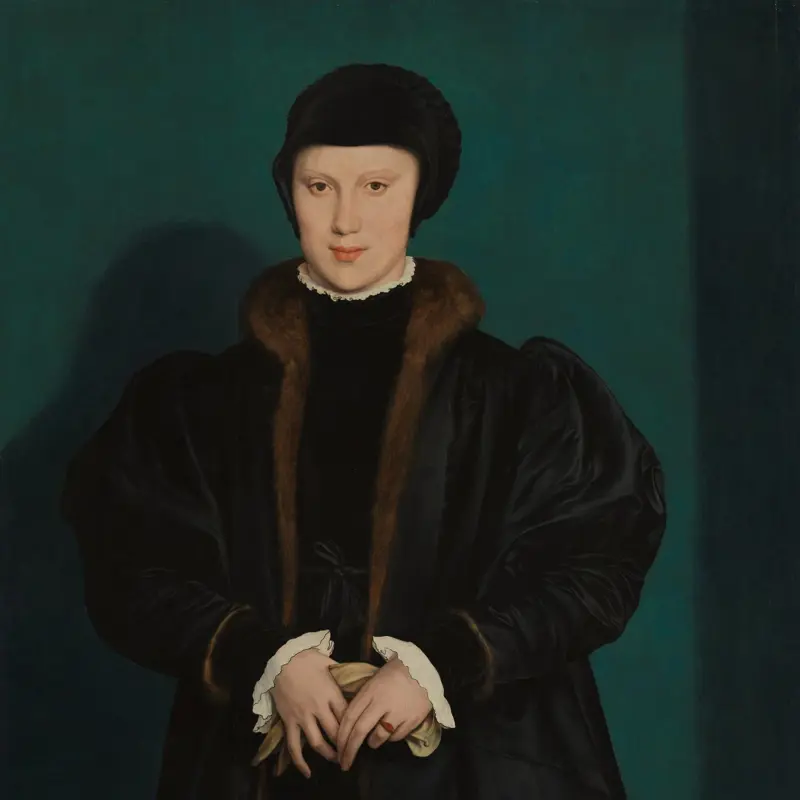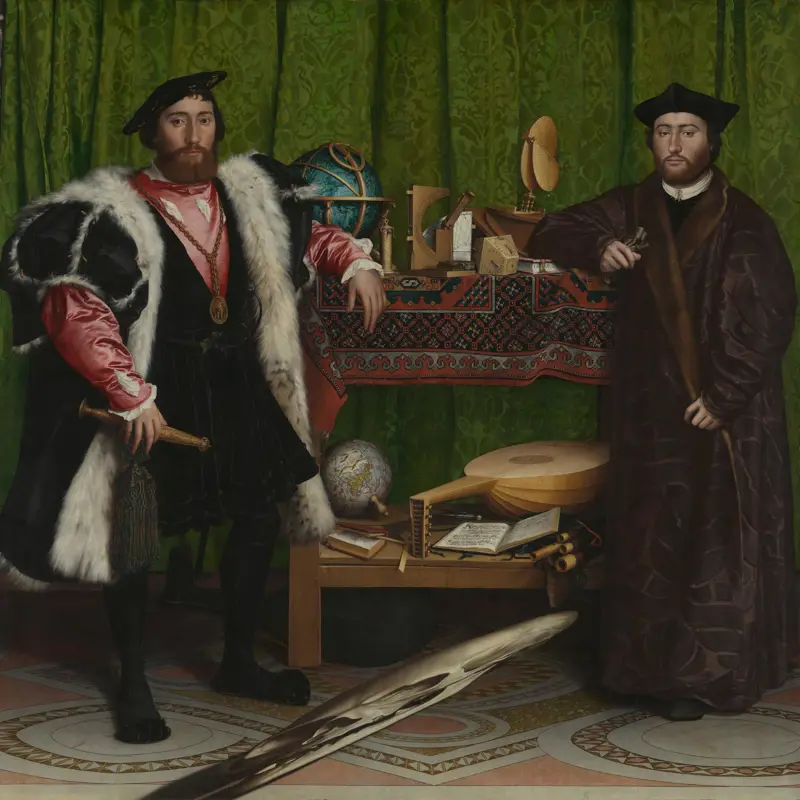Hans Holbein the Younger, 'Erasmus', 1523
About the work
Overview
Erasmus (1466/9 - 1536) was one of the most famous writers of his day and one of the most admired humanist scholars. In this portrait the artist has tried to surround the sitter with items which reflect his interests and profession. This idea was developed further in Holbein's 'The Ambassadors'. A Latin couplet on the book on the back shelf, perhaps by Erasmus himself, praises Holbein's skill: 'I am Johannes (i.e. Hans) Holbein, whom it is easier to denigrate than to emulate.'
This painting is not available for reproduction
Key facts
Details
- Full title
- Erasmus
- Artist
- Hans Holbein the Younger
- Artist dates
- 1497/8 - 1543
- Date made
- 1523
- Medium and support
- Oil on wood
- Dimensions
- 73.6 × 51.4 cm
- Inscription summary
- Dated
- Acquisition credit
- On loan from Longford Castle collection
- Inventory number
- L658
- Location
- Room 54
- Image copyright
- On loan from Longford Castle collection, © Longford Castle Collection
- Collection
- Main Collection
About this record
If you know more about this work or have spotted an error, please contact us. Please note that exhibition histories are listed from 2009 onwards. Bibliographies may not be complete; more comprehensive information is available in the National Gallery Library.



